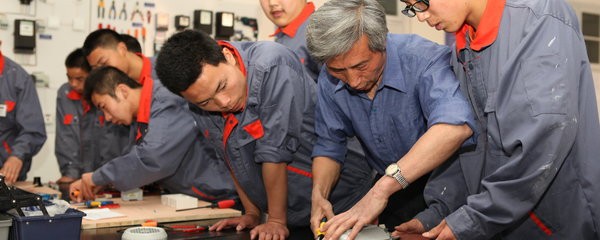05
Sep 2014
Quality derives from education
Big initiative on vocational training is to upgrade China’s economy
Shenyang in China’s industrial northeast, dominated by heavy industry and leviathan state-owned enterprises, may seem an unlikely model for the modernization of the country’s economy.
Still, the capital of Liaoning province is seen as a leader in vocational training. It has had a long tradition in turning out the skills that industry needs and in 2010 was designated as one of 10 vocational training pilot areas.
The Chinese government made clear in June that it regarded such training as central to the country shedding its cheap “Made in China” price tag and switching to more higher-cost manufacturing and services. It announced that it wanted to increase the number of vocational places by almost a third to 38.3 million students by 2020. The government also made clear that while university graduates with degrees from Chinese and Western universities were part of the upscaling journey, the greater need will be for skilled people in the wider workforce.
Over the past decade about 30 vocational training schools have been consolidated into nine, each providing workers for designated pillar industries. Part of the success of the new vocational training system is that of the 10,000 students who graduate each year between 95 and 98 percent get jobs. Liu Zhimin, 48, the vice-director of the bureau of education in Shenyang, says the reforms that may be a blueprint for the rest of the country are already showing evidence of working.
“The quality of the labor force decides the quality of the industrial transformation,” he says.
“We have made great efforts to boost collaboration between schools and companies to ensure that the students trained in the vocational education schools are in line with market needs.”
Premier Li Keqiang says that having a more skilled workforce could go a long way to building China’s future economic success: “Imagine the scale and level of Chinese products and services if most of our 900 million labor force can be trained to master medium and high-level skills”.
“Students with both vocational certificates and academic degrees will be very competitive in the jobs market. These can expect better pay over the lifetime of their careers than those who have simply gone to university.”
Germany as a case in point
One country that has placed particular emphasis on vocational training is Germany, which many see as having played a role in its economic success, particularly in building a strong engineering sector. Those behind the vocational training reforms in Shenyang are very conscious of what lessons they can learn from Germany, the exception in Europe in having a highly efficient vocational training system. Helmut Schonleber, sector director of vocational education and training projects, says vocational training could prove as effective in China as it has in Germany.
“Why has a small country without natural resources such as Germany become so successful as a global supplier of top quality products?” he asks.
“The secret is the excellence of Germany’s workforce, guaranteed by the excellence of its vocational education system.”
Schonleber adds it is clear why vocational training is vital for China to upgrade its industrial base.
“High-quality manufacturing can be achieved in two ways: the first is a very high level of automation, using high-precision and highly reliable machinery and equipment but very few people; and the second is using highly qualified people to manufacture things that are not produced by robots.”
Yu Zuguang, vice-chairman of the Chinese Society of Vocational and Technical Education, a research institute for vocational education, says the German system is ideal for China.
“Their vocation education is well designed and the training is closely linked to employers’ needs. We need to learn from this.”
An increase in the quality of life
Across the country, those who graduated from vocational colleges in 2010 on average doubled their salary after working for just three years. About 58 percent were also promoted. Lu Xin, China’s vice-minister of education, said that vocational training was giving many access to jobs and salaries they would have never have had in the past.
“Graduates coming out of higher vocational training have huge potential to improve their lives. They will also be able to play a significant role in facilitating China’s economic transformation and industrial upgrading. Such cooperation benefits both sides. It creates employment opportunities and we can find workers,” he says.
In Beijing, Yu at the Chinese Society of Vocational and Technical Training, believes the biggest achievement of the government’s latest initiative could be in putting vocational training center stage. “This mindset has existed for a long time. That so many high-ranking officials gathered in Beijing in June to endorse the new policy creates an unprecedented opportunity to change this perception once and for all.”
Source: ChinaDaily
See more at www.sbeinspection.com































